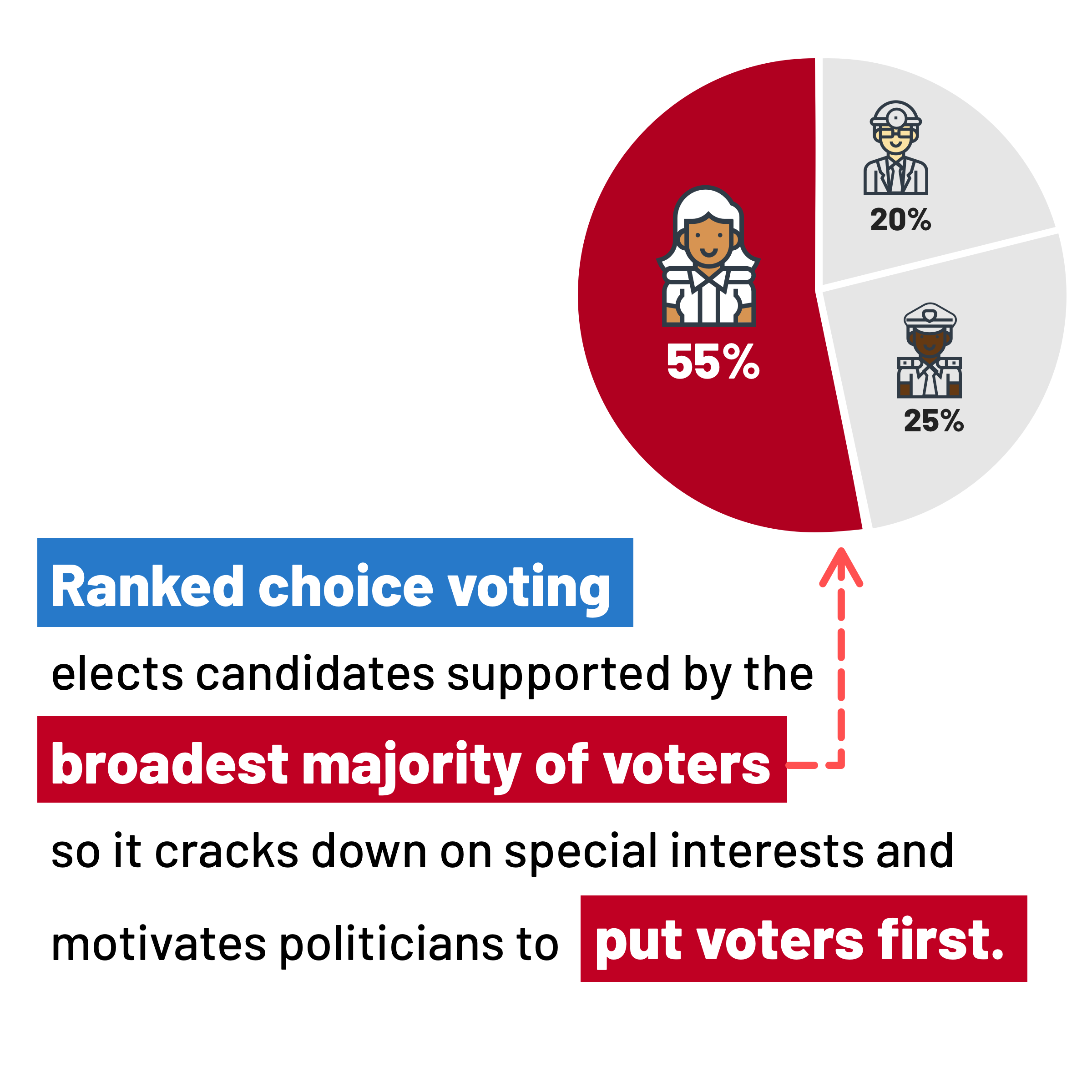Opponents
Lobbyists, political consultants and politicians who fear more competition are threatened by ranked choice voting and are starting to organize against it.
Here are the arguments they make against ranked choice voting:
They say: "Voters aren’t smart enough to understand how to rank their choices."
The Truth: Trust the data and voters.
Voters in Minneapolis have been using RCV since 2009 and continue to report positive results. 92% of respondents said they find ranked choice voting “simple”.
You can also see low ballot error rates across all the states and cities with RCV elections. Only a tiny fraction of votes, typically less than 2 out of every 1,000 votes cast, have a problem with them - that's about the same error rate as non-ranked ballots.
They say: “Black voters and voters of color suffer with ranked choice voting.”
The Truth: Ranked choice voting is increasing power for all voters.
Claiming that ranked choice voting is somehow “harder” for Black voters and other people of color insults their intelligence. Studies show that Black voters understand ranked choice voting as well as any other voting demographic and they show up and make their vote count in ranked choice voting elections.
Furthermore, candidates of color, especially women of color, have won more seats in ranked choice voting elections.
They say: "Ranked choice voting reduces your power if you only vote for one candidate."
The Truth: Nope. With ranked choice voting, every person gets one vote, whether or not you rank choices.
If you choose not to rank your candidates, your vote still goes to the person you support.
Unfortunately, with most elections, lots of votes don’t count. Elected officials have won political races despite a majority of voters preferring a different candidate. Ranked choice voting prevents that from happening.
Federal courts from Maine to California have unanimously upheld ranked choice voting as constitutional and fully consistent with the one person one vote requirement.
They say: "People won’t show up to vote."
The Truth: Studies show that more people are voting in states and cities that use ranked choice voting.
Opponents cite narrow, dated studies that claim that turnout falls with ranked choice voting elections. But when you look at all offices and all jurisdictions with it, the evidence is clear: voter turnout is rising in RCV elections.
First-time ranked choice voting elections in Maine, New Mexico cities, and the five presidential primary states with RCV in 2020 each saw particularly high turnout rates compared to the prior election cycle.
They say: “This is going to make elections unfair! Voting will never be the same!”
The Truth: Ranked choice voting is a common-sense reform.
It won’t have an impact on who wins where candidates win with a majority of first choices. In fact, some critics complain it doesn’t change outcomes enough.
But in races with crowded fields and split votes, ranked choice voting ensures outcomes represent the will of the voters. And it does faster, cheaper and better than expensive runoff elections.
It helps voters, not one party over another. Republicans can run without fear of split votes from Libertarian Party candidates. Democratic candidates don’t have to fear Green party candidates. No matter what party we support, we all win when we have more choices and stronger voices.
They say: "Ranked choice voting leads to ‘exhausted ballots’."
The Truth: Ranked choice voting makes more votes count.
“Exhausted ballots” is used to describe what happens when you cast a vote without listing a second choice and your preferred candidate is in last place and eliminated. “Exhausted ballots” happen in elections all the time - like any time a voter votes for a losing candidate, or decides not to vote for an office they don’t know much about.
You have the right to vote for as many or as few candidates as you like and it’s up to you to decide. Ranked choice voting simply offers you that decision. But one thing cannot be disputed: by giving voters a backup, it always makes more votes count.
